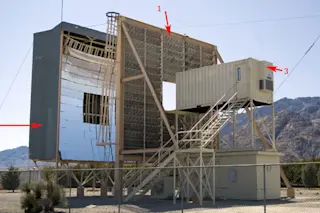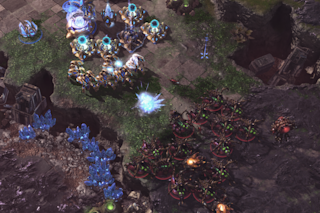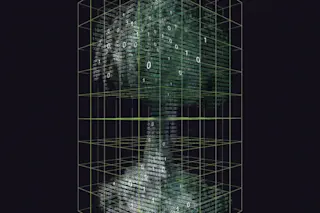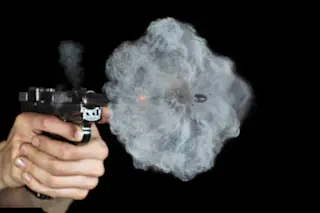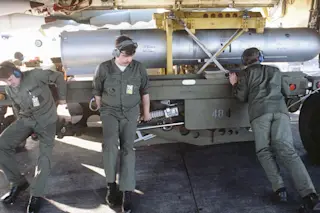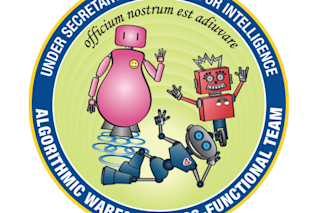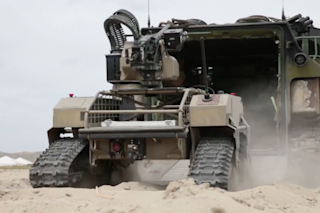The burst of heat that spreads out from a nuclear explosion is so intense that it can inflict serious burns five miles away. At the U.S. Army’s White Sands Missile Range near Las Cruces, New Mexico, a device called a solar furnace—essentially a three-story-high magnifying glass—routinely simulates the effects of such a blast.
The furnace’s heliostat, a 40-foot-wide panel of 36 mirrors (not visible here), tracks the sun across the sky, reflecting light into the attenuator (1), a grate that can be opened or closed like a window blind. Sunlight that makes it through falls onto the concentrator (2), a concave panel of 180 mirrors that focuses the light into a beam and sends it into a 16-foot-long test chamber (3). There, researchers use an adjustable shutter to control how long objects are exposed to the beam. The furnace can reach temperatures of up to 5,000 degrees Fahrenheit.
Scientists have ...


